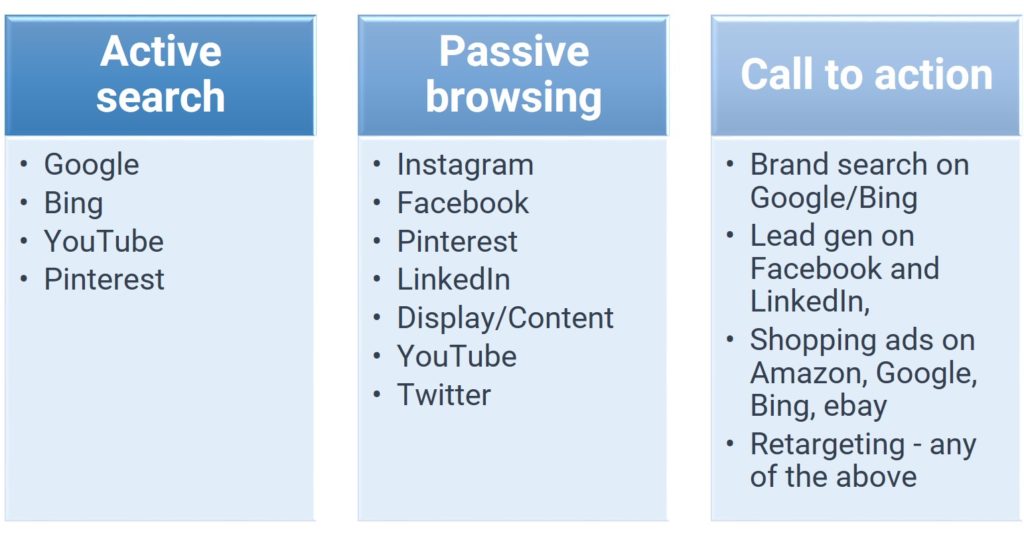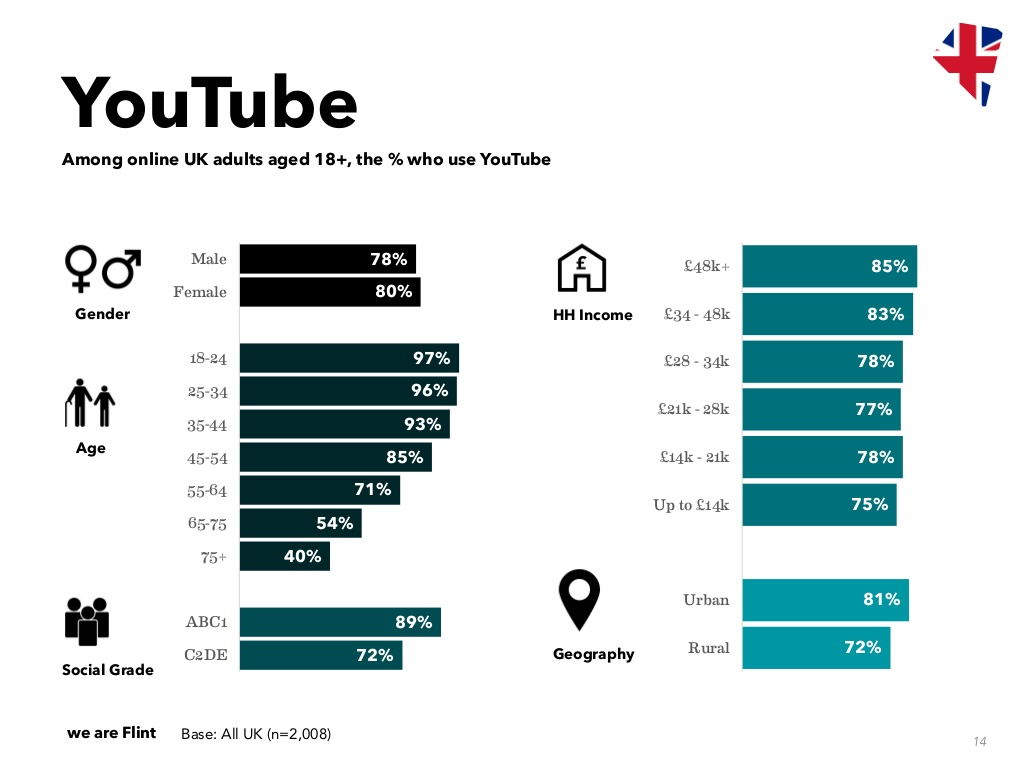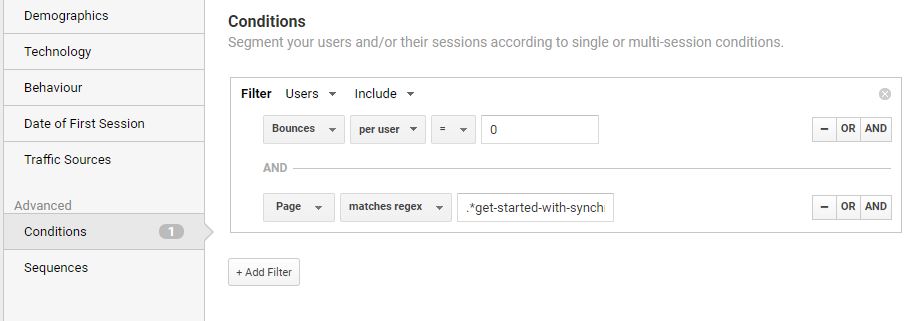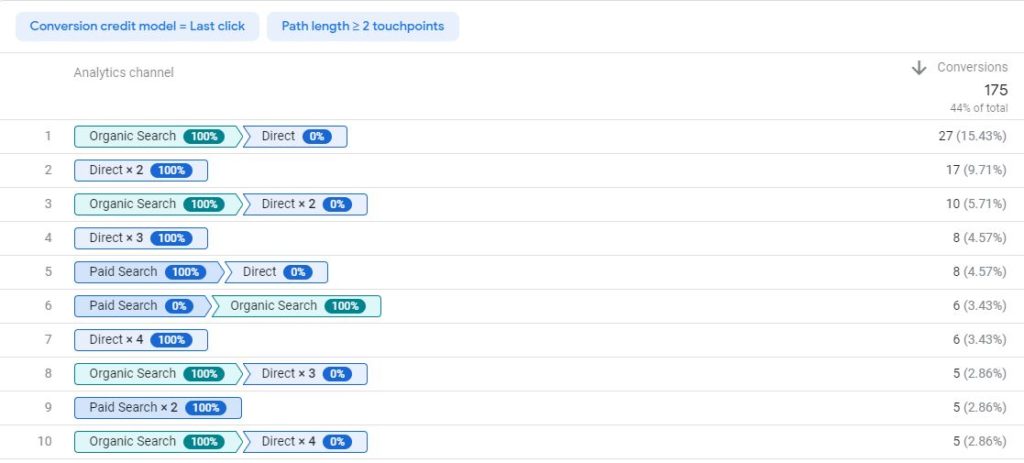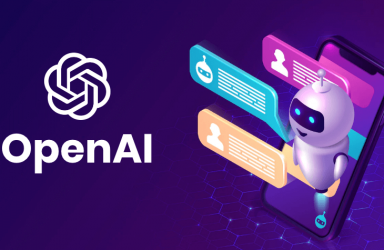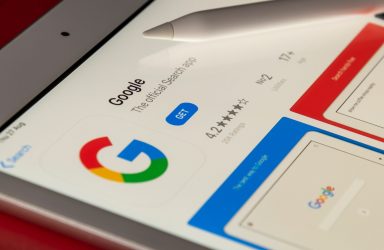As we have learned over the past few years, the user journey is changing. What worked then, may not necessarily work now. In order to build a clear strategy to engage them with our products and services, we first need to understand the complexities of both the consumer and the market right now.
Single channel marketing is simply not enough anymore
For the first time ever, I found myself on Pinterest looking for an ad I had previously seen. I think the only time I have looked for an advert before was for a client, to prove their campaign was actually live!
I had seen this super adhesive double sided tape on a short video a few weeks back and now had the need to purchase it. However, I couldn’t find the product anywhere else so I ended up scrolling through Pinterest trying to find that unique product demo ad.
Here lies the challenge of single channel marketing. You may have the perfect message to sell to your customers but if you can never be found at the point of conversion you may have just wasted your initial investment.
Active and Passive Users
Customers can be actively or passively looking for your product or services at any time on any device. Taking myself as an example, I fall into many audience silos.
Active Converting Consumer – I know what I want and I want it now
I am looking for double sided super adhesive tape to stick up some canvases, which won’t mark my freshly painted walls.
B2B Passive Customer – I am on annual leave but my brain is in work mode
I am Head of Digital thinking about the new year and how to solve some of the internal process needs we have. I am open to finding new software or tools to help me solve the problems.
Browsing Passive Consumer – I don’t know what I want but if I see it I may just buy it
Its post Christmas and I have the desire to buy a bargain or two. I don’t know what I want to purchase so if I see a good offer I am open to purchasing it even if I don’t need it.
Based on the above, I am just one consumer with multiple behaviour patterns, proving that marketers need a way to reach the right audience, at the right time, in the most effective way.
Top 6 tips to reaching the right online audience
1. Know who you are trying to reach
It may sound simple but often when I ask clients who their ideal customer is, the answer is nearly everyone. However, I would say there are very few business models where that can be possible, so let’s break down how you can pinpoint your priority customers.
- Why do you exist as a business? (what desire are you creating?)
- What are you solving for the customer? (what problem are you fixing?)
- How much does your solution cost? (who can afford it?)
- Where do you sell to? (country, city, locality and which of those is a priority? E.g. which drives current revenue and where is the biggest growth opportunity?)
By answering these questions, you will refine your priority audience and have a starting point for where to invest your budgets. You may have multiple audiences, so once the top priority is gaining success, expand to other audiences.
2. What are their go to channels and devices?
Now you’ve identified your core target audience, you can understand more about their user behaviour. Based on this, which channels need to be part of your strategy?
What audiences are these channels reaching based on user data?
More than 35% of clicks for US business ads on Google come from outside the US (Google, U.S. Chamber of Commerce Foundation)
Male users between the ages of 25 and 34 years constituted the biggest demographic group of Facebook users (Statista, 2019)
71% of the billion monthly active users on the Instagram app are under the age of 35 (Statista, 2019)
45% of LinkedIn users earn $75,000 per year and more than half of all LinkedIn traffic comes from a mobile device (Sources: Pew Research Center, The Street)
Females make up 79.5% of users as of 2019, however the share of male users has increased year on year since 2013 to 20% (Statista, 2019)
YouTube
97% of 18 to 24 year olds use YouTube and in the UK YouTube is the most used app of all social media followed by Facebook. We are Flint provided the following study on the UK YouTube audience.
3. What time are they browsing, what time are they buying?
There are two key ways to find out when your customers are browsing and when they are buying.
Firstly, Google Analytics. This will show you when a visitor has entered your website by the hour and minute. Based on their behaviour you can apply a methodology to identify a browser vs a converter.
Take this example: If a visitor enters the website and doesn’t bounce but visits several key pages on the website without converting, you could assume these are browsers or information gatherers. In contrast, if a visitor completes a call to action on the site they are actively engaging. Depending on the action, this will also distinguish whether they are a browser or buyer. This can then be broken down by hour.
Secondly, use your CRM or sales database. This will allow you to see the time of purchase, or time of form completion.
Both of these data sources allow you to map out user trends across your website and build messaging for different audiences based on time of day and intent.
4. Campaign testing to find your audience
It isn’t always as simple as analysing trends, or marketing via channels based on demographic or interest statistics. Sometimes you need to test your theory via trial and error.
Each of your campaigns can have multiple settings allowing you to test your audience. Device, location, time of day, day of the week, to mention a few, and then each campaign structure can have different messaging.
By setting up multiple campaigns to target different audiences, you can test and learn from live data. The challenge being you need enough budget to share across multiple targeting criteria.
It is also crucial to ensure you are tracking and monitoring, make sure you know what KPIs you will use to determine success. Are you looking for engagement or conversion?
If you are looking to influence browsers, then the Google Analytics Multi-Channel Funnel may be a good way to report on performance. If you are running a campaign specific for conversions, is last click more important to you than post last click?
5. Use automation and smart optimisation
All of the above is a huge undertaking. You not only need to know who you are targeting, at what time, on which device, with a message that is highly relevant to engage a passive or active audience – you also need to run it, monitor it, analyse it and optimise it.
Some of the platforms themselves have tools to assist with this like Google’s Smart Bidding and Smart Creatives. Facebook Similar Users and Google In-Market Audiences find an audience who matches a similar behaviour or profile to those you are looking to engage. For example they may have researched products similar to yours.
You can also use your own customer data, to prevent targeting new customer messaging to current customers across channels such as Twitter, Google, Facebook and LinkedIn.
Why not test out some of these automated strategies on a single campaign and see how it performs. Just remember to allow enough time and data for the automation to work.
6. Measure everything and make sure you adjust and optimise your strategy accordingly
When it comes to digital marketing strategies, the key is to evolve and grow with the data and results. By staying static your messaging and strategy will become very quickly dated.
With any digital marketing, the key is to ensure you are tracking and monitoring everything based on your KPIs. You should establish what these KPIs are at the very start. That way you will be able to determine what is and isn’t working.
It is essential to not just look at conversion and sales metrics, these are only one piece of the puzzle. As we identified at the start, there are so many touch points to conversion and different states of the customer behaviour. You need to try and engage them at each point and make sure when they are ready to buy, they can find you easily and purchase via a simple and secure route.
In summary the top tips to finding the right customers online are:
- Know who you are trying to reach
- What are their go to channels and devices
- What time are they browsing, what time are they buying?
- Campaign testing to find your audience
- Use automation and smart optimisation
- Measure everything and make sure you adjust and optimise your strategy accordingly
Targeting the right customers at the right time requires a combination of the right knowledge and expertise, along with a detailed knowledge of understanding analytics and data.
If you would like to learn more, please contact me or the team here at Digital Clarity.
